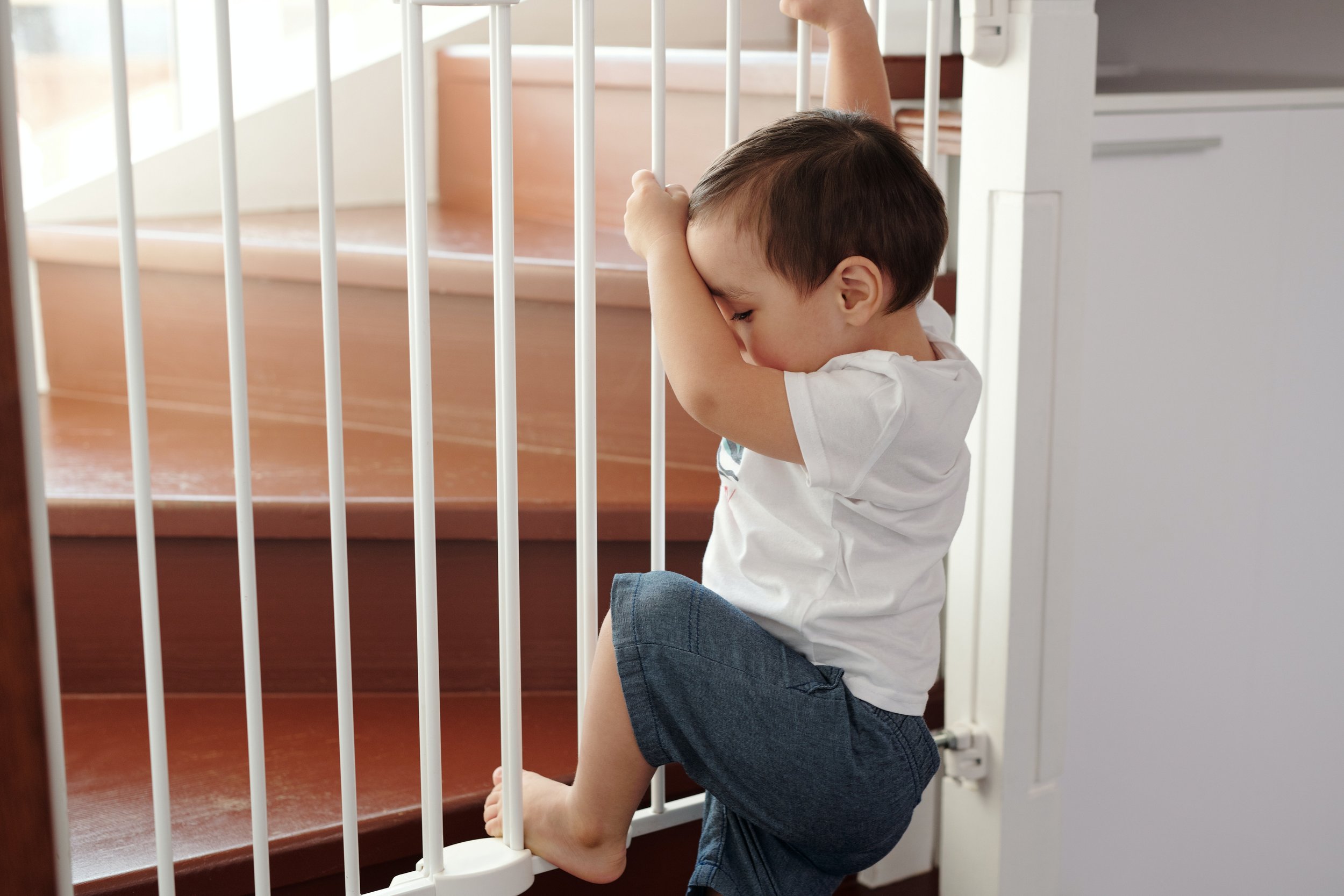Preventing Accidents: 10 Important Steps To Keep Your Baby Safe
This post may contain affiliate links or sponsored content. Please review Disclaimer and Disclosure for more info.
They start out so small and stationary. The little potato baby you brought home from the hospital doesn’t seem like it can make it a couple of inches, let alone be a hazard around the house anytime soon, right? Well, unfortunately, those stationary days are numbered and your little one is going to be “Speedy Gonzales” very quickly as they explore the exciting world around them. Keeping your little one safe is priority number one, but once your baby becomes mobile, that job becomes even more tricky. As you get started baby-proofing your house, make sure to keep these 10 safety tips in mind so you can prevent accidents and keep your little one cruising through their exploratory early years!
1. Start with a Room-by-Room Safety Assessment
Okay, let's put on our detective hats and go on a room-by-room adventure! As you look at your rooms with fresh eyes, look for potential hazards such as sharp edges, electrical outlets, cords, and unstable furniture.Picture this: You're checking out the nursery and notice those adorable floating shelves. They’re super cute, but they could be a hazard waiting to happen. Time to anchor those bad boys to the wall and ensure they won't come crashing down during a diaper change frenzy. Addressing concerns like these from the start will give you peace of mind and prevent accidents
2. Secure Furniture and Heavy Items
Remember that one time your friend's toddler thought it would be a great idea to scale a bookshelf like Mount Everest? Yeah, we want to avoid that heart-stopping moment. Babies love to grab, pull, and climb on anything within their reach, so be sure to secure heavy furniture to the wall using furniture straps. Let's keep those little adventurers grounded and our nerves intact.
3. Install Safety Gates
Safety gates are essential for blocking off hazardous areas, such as staircases and rooms with delicate or dangerous items. Stairs especially can be dangerous. To your little one, stairs are the equivalent to Mount. Everest, and they are ready to conquer that mountain. Install safety gates at the top and bottom of staircases, as well as in doorways leading to rooms that are off-limits to your little one.
4. Lock Cabinets and Drawers
Those curious little hands of theirs can quickly find their way into cabinets and drawers filled with cleaning products, sharp objects, and other potentially harmful items. Install childproof locks or latches on cabinets and drawers in the kitchen, bathroom, and any other areas where hazardous materials are stored. I recommend these because, as someone who is equally bad at opening those cabinets as my little one is, the magnet makes it easier to bypass and save my sanity.
5. Cover Electrical Outlets
As your baby starts crawling around the floor, interesting items at their level will be curiosity number 1! Uncovered electrical outlets pose a significant risk to crawling and exploring babies. Whether the outlet is in use or not, outlet covers or safety plugs should be in place to prevent accidental electric shocks. For added outlets in use, an outlet case is perfect for keeping your electronics in place without posing a risk to your little one.
6. Baby-Proof Doors and Windows
Okay, let's talk about doors and windows. Little fingers can get pinched, and we don't want any escape artists in our hands. Door stoppers and window guards are our secret weapons. They'll keep doors from slamming shut on tiny hands and limit window openings, ensuring your baby stays safely inside.
7. Use Corner and Edge Protectors
Ah, those pesky sharp corners. They seem to be magnetically attracted to tiny foreheads and knees. Adding some soft and cushioned corner protectors on furniture edges and tables will save you from lots of unnecessary bumps and bruises. That way, when your little one takes a tumble, it's a softer landing.
8. Remove Choking Hazards
Babies are naturally curious and tend to put everything in their mouths. Keep small objects, coins, batteries, and any other choking hazards out of reach. Regularly scan the floor and low-lying surfaces for potential hazards that your baby might find.
9. Secure Cords and Blind Strings
You know how babies have this amazing superpower of grabbing things they shouldn't? Well, cords and blind strings are like magnets for their tiny hands. Cords and blind strings can pose a strangulation risk for babies and young children. Keep cords out of reach by using cord shorteners, cord wraps, or cord cleats. A little prevention goes a long way.
10. Install Smoke and Carbon Monoxide Detectors
This may be an obvious one, but having functional smoke and carbon monoxide detectors are a safety precaution for not only your little one ,but your whole family. Every home needs working smoke detectors and carbon monoxide detectors. Test them regularly to make sure they're functioning properly. Your family's safety is worth it.
There you have it—our ultimate guide to creating a safe and baby-proofed home. Remember, each home is unique, so adapt these tips to fit your specific needs. And don't forget, even with all the baby-proofing in the world, keeping a watchful eye on your little one is the best safety measure. Remember, it's an ongoing process, so regularly reassess and update safety measures as your child reaches new milestones.
Now go forth and create a secure haven for your family!


